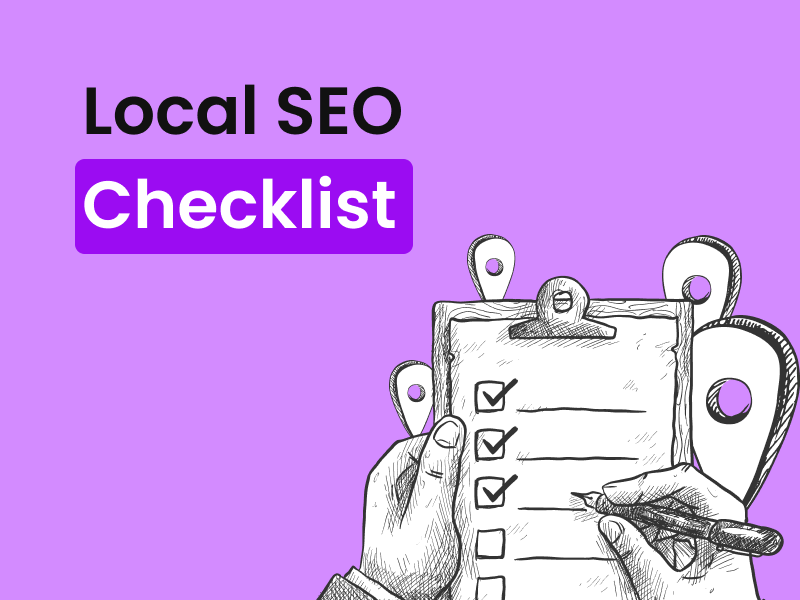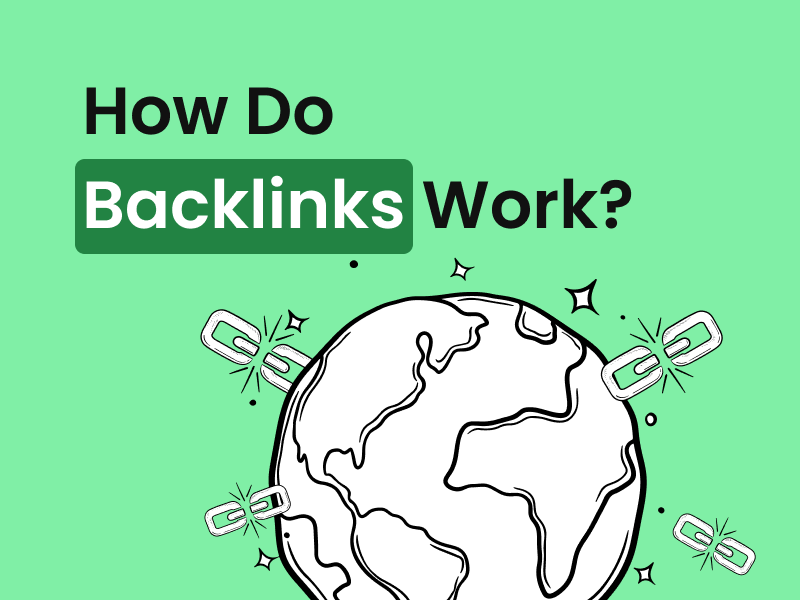Master the Meta: Title, Description & Tag Length Check for Maximum SEO Impact
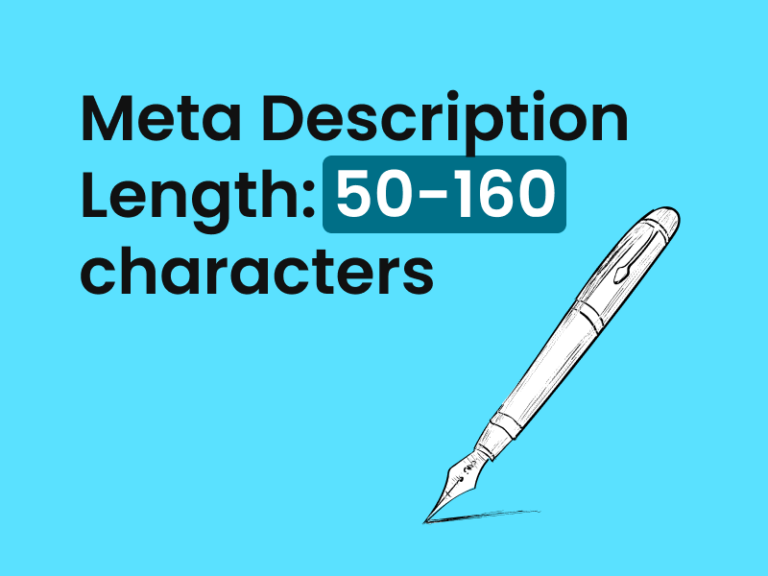
By Melissa Ng | Last Updated 15 January 2024
Introduction to Meta Title and Description Character Limit
Diving into the World of Meta Description
A meta description is an HTML attribute providing a concise summary of a webpage’s content. Optimisation of this crucial component can notably enhance your website visibility. It’s a brief snapshot, often aided by semantics, that’s displayed under the page title on search engine result pages (SERPs). Mastering meta descriptions, with their optimal SEO description length, can mean the difference between a user clicking your link or a competitor’s, even if they’re ranked higher. Meta-description lengths play a significant role in this aspect. Here’s how it looks like from the backend in HTML:
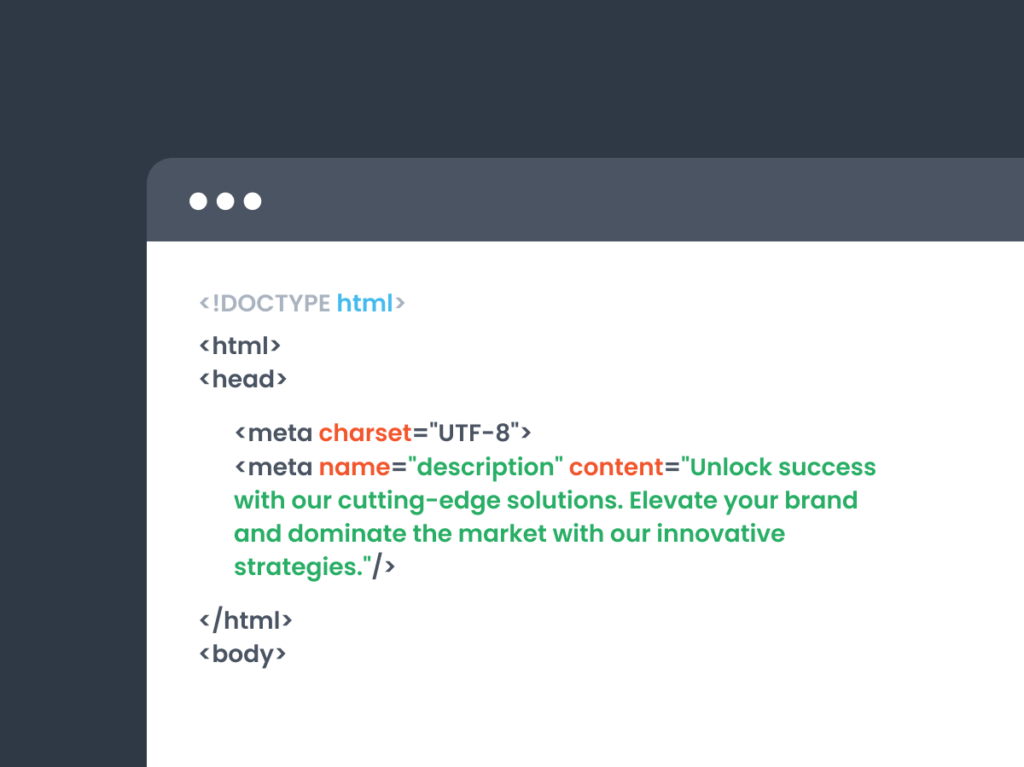
This is how it looks like in the search engine results:

If you’re wondering how your title and description may appear in Google SERP, you can use a description checker tool. One such efficient tool is the Yoast SEO plugin, particularly popular among WordPress users. This tool not only allows you to view and set meta descriptions but also emulates their appearance on SERPs. It’s like having a meta title and description checker in your plugin arsenal.
Understanding the Power of Meta Titles
Meta Titles, also known as title tags, are an integral component of SEO strategy. They serve as the first point of interaction between your website’s content and users on the search engine results page (SERP), influencing both the website ranking and SEO ranking. Not only do they inform users about the content of your page, but they also communicate the focus keyword to search engines, helping to enhance your search algorithm and search engine optimisation performance.
Remember, every time someone views your title in search results and doesn’t click, that’s a missed opportunity. A meta title that effectively captures the essence of your webpage, including one target keyword identified by keyword research, can significantly augment your click-through rate (CTR). This, in turn, boosts your traffic and, potentially, leads to more conversions. The importance of a well-crafted, accurate, and SEO-friendly meta title is highlighted by tools such as SEOPressor, which helps optimise your on-page SEO for higher & improved search ranking.
Remember, a well-penned meta title not only enhances visibility and click-through rates but also improves user engagement and helps search engines understand what your page offers. It’s the distilled essence of your content in a brief but potent snapshot!

Creating Optimal Meta Titles and Descriptions: A Comprehensive Guide
Crafting A Good Meta Description In 2024
Many factors contribute to an effective meta description. However, the power of data can’t be overstated in crafting a compelling meta description. Here are six crucial elements:
- Matched Content: Ensure your meta description aligns with the content on your page, targeting specific keywords. Misleading descriptions can lead to high bounce rates as users will leave if the content doesn’t match their expectations.
- Unique Descriptions: No two pages should share the same meta description. Unique meta descriptions, enriched with target keywords, help differentiate your pages in the SERPs and improve click-through rates.
- Intent and Keyword Usage: Using target keywords in your meta description can make your page stand out in the search results, as search engines often highlight the searched keywords. Utilise keyword data from tools like Google Keyword Planner, Moz Keyword Explorer, or Ahrefs Keyword Explorer to ensure your description aligns with the search intent.
- Compelling Language: Use persuasive and engaging language in your description to entice users to click your page. Don’t be afraid to include a call to action to nudge users in the right direction.
- Appropriate Length: While there’s no set minimum or maximum meta title length, a meta description should ideally be between 50 – 160 characters. Be mindful of the maximum length to ensure it’s fully shown in Google results.
- Specifications if needed: For specific types of pages, like product pages or recipes, including detailed specifications informed by structured data can be helpful.
Think of your meta description as a mini-advertisement for your webpage; make it as compelling as possible to attract clicks.
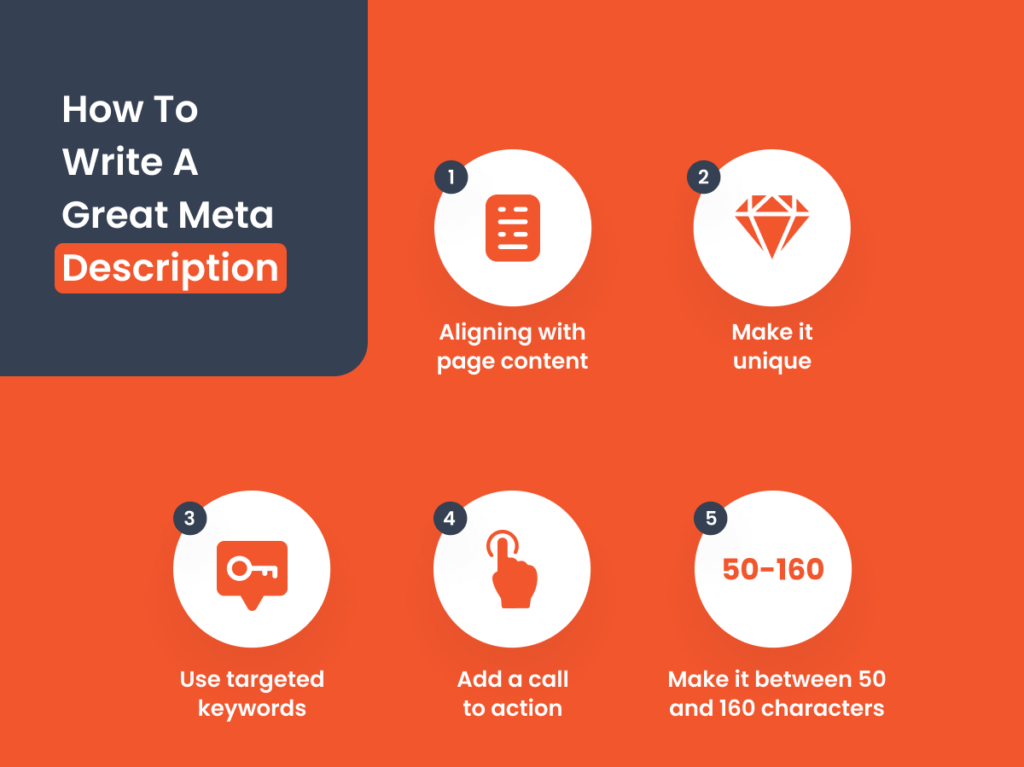
How To Create A Compelling Meta Title
Writing an impressive meta title entails balancing creativity with SEO best practices. Following the rule of thumb, incorporate your high value, primary keywords into your meta title. Here are other key pointers to keep in mind:
- Update Metadata with High-value Keywords: Keyword research is crucial. Identify high-value terms and phrases that people use to search for content related to your blog or page.
- Keep It Under 60 Characters: Google typically displays the first 50-60 characters of a title tag, as conveyed by the snippet preview. Keep your title concise to prevent it from getting cut off in SERPs.
- Ensure it Describes the Page Accurately: The title must reflect the content of the page correctly. Misleading titles can result in lower click-through rates and higher bounce rates.
- Make It Unique: Your title should distinguish the page from others on your website. Having a different description of meta tags for each page helps both users and Google, especially in searches where users may bring up multiple pages on your domain.
- Be Descriptive, Compelling and Current: A great title piques curiosity and encourages clicks. Think from a user’s perspective and frame your title to answer their query. You can include promotions or sales, but remember to update the meta description when they end.
- Utilise Title Generators and Checker Tools: Tools like title generators can spark creativity and help you come up with multiple title options. A meta title and description checker tool can provide a visual idea of how your tags may appear on a search engine result page, fostering greater appeal in your blog or page.
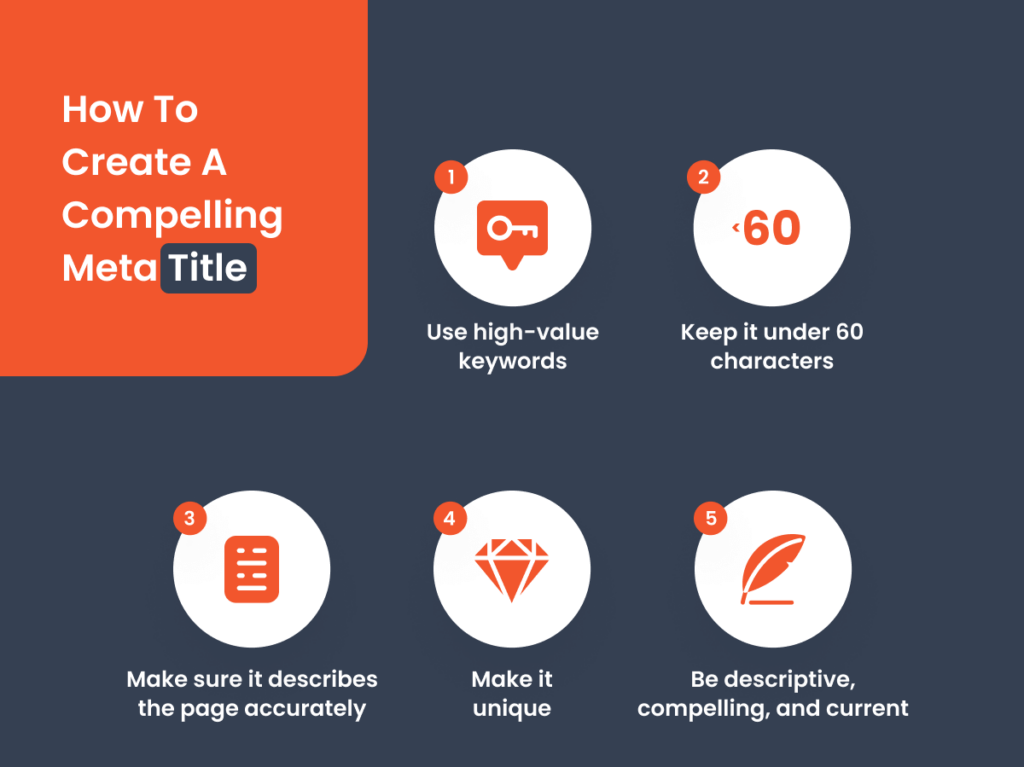
Title and Meta Description Insights and Guidelines
Decoding the Character Count for Meta Description: Does Length Matter?
The short answer? Not always. There’s a fine balance to consider when crafting your meta description length. As per their specifications, meta descriptions are usually truncated after 160 characters in the SERPs. On mobile devices, the maximum limit is about 680 pixels and 120 characters. That’s around two lines of text. Therefore, keeping your description within these limits ensures that the entire text is visible to potential visitors, helping your content communicate a clear and concise message to better enhance your website SEO.
However, a too-short meta description might not sufficiently summarise your page content. It could miss the opportunity to influence search engine results and attract more traffic. Remember, your meta description is a direct pitch to your audience. Consider using the space available to convince searchers that your page has the information they need.
On the other hand, a too-long description exceeds the display space and risks truncation, which could disrupt your message. More isn’t always better unless it’s concise and directly related to the page’s content. Hence, improving your website visibility is best delivered by striking the right balance of information and brevity.
When deciding on your meta description length, focus on providing valuable information that entices a click, but aim for a length between 50-160 characters for optimal visibility.

What’s The Ideal Length Of A Meta Title?
Staying within the 50-60 characters is generally recommended for meta titles so they aren’t cut off in Google SERPs. However, a SERP preview tool can help you optimise your meta title length more effectively by assessing how it appears on the search engine. There may be situations when extending your title length can serve specific strategic purposes, such as improving visibility on mobile devices — which tend to show more characters — or on social media platforms like X (formerly known as Twitter). It’s important to do this wisely though, as a too-lengthy title could lose its punchline due to truncation.
Here’s when and why you may choose to stretch your meta title length:
- When Including Long-Tail Keywords: Long-tail keywords are very specific search phrases with lower search volumes but higher conversion rates. If your keyword is lengthy, it may necessitate a longer title.
- When Writing for Other Search Engines: Bing and Yahoo don’t necessarily truncate at the same length as Google. This may also be pertinent if a large portion of your traffic comes from mobile devices, considering some recent changes to title visibility on mobile search results.
- When Branding Needs Space: If including your brand name is vital and it’s lengthy, you may need to stretch your title, especially when your content is shared across X or other such platforms, where brand visibility is crucial.
- Additional Information Required: Sometimes, you may need to include additional information (like geolocation or a service qualifier) to target a specific audience. Longer titles can accommodate this especially for mobile users who make geography-based searches.
Remember, stretching your meta title length is a strategic move that needs careful consideration. It should align with your SEO strategy and still remain user-oriented, captivating both desktop and mobile viewers.
Common Errors in the World of Meta Descriptions and Titles
Avoid Overuse of Keywords
Keyword stuffing, or the overuse of keywords, is a well-known pitfall in SEO practices. This applies to both meta descriptions and titles. While it may seem tempting to pack as many keywords as possible into these tags, to show up prominently in Google’s search snippets, it can lead to detrimental results.
From a user perspective, an over-stuffed meta title or description can seem like a dubious spam, decreasing the user’s trust in your content. A poorly written, keyword-stuffed tag can lead to lower click-through rates.
From a search engine standpoint, overuse of keywords can invite negative implications. Google’s algorithm is determined to provide users with the most relevant and high-quality results. Overstuffed keywords can seem manipulative, prompting the search engine to downgrade your page’s ranking.
To avoid this pitfall, use keywords wisely. Ensure they are relevant to your content and organically integrated into your meta title and description. Just a single mention is often enough, and don’t forget, popular target keywords are given more weightage, so remember that the overall context of your content holds more value than individual keyword density.
Consider the following comparison:
- Spammy/Overused: “Buy shoes, best shoes, cheap shoes, high-quality shoes, shoes online…”
- Clear/Effective: “Discover high-quality shoes at affordable prices online at our store.”
Note how in the ‘Clear/Effective’ example, the meta description would likely show up fully in the search snippets. Additionally, if this content were shared on social media, it would make use of the meta description for generating a snippet, further making the case for a clear and effective description.

Read our blog post to learn more: What Is Keyword Stuffing? Definition, How To Avoid And Why It’s Bad For SEO.
Avoid Duplicate Meta Descriptions
Duplicating meta descriptions across different pages is a harmful practice that can damage your SEO efforts. When search engines encounter identical meta descriptions, possible courtesy of neglect or oversight in plugin handling, they might erroneously conclude that the content on these pages is also duplicated, discouraging them from including your pages in search result tweets.
Duplicate meta descriptions can also tarnish your click-through rates. Picture this: a user conducting a search and spotting two identical descriptions under different URLs. Such a scenario can generate confusion and mistrust, potentially lessening the chances of a click.
Unique meta descriptions on each page, easily achievable through professional SEO plugins like Yoast, are critical in providing accurate and clear context, helping users, and search engines understand its uniqueness and relevance.
If dealing with many pages, where manually writing unique meta descriptions is an uphill task, consider automating your descriptions. With the aid of plugins, you can use dynamic templates and replace placeholder variables with specifics like product names or locations. In this way, you maintain uniqueness across a multitude of pages.
In essence, treat your meta description like a fingerprint – it should be unique to each page and identifiable, much like each individual tweet standing out on a crowded feed.
FAQs on Meta Description and Title Length
“Meta Description Word Count”: How Long Should Your Meta Description Be?
While meta descriptions can be any length, Google typically truncates them at about 160 characters, So it’s recommended to keep your meta descriptions between 150-160 characters, including spaces, to ensure they are fully visible. In search snippet results, users may see different-sized snippets depending on how and where they search, hence why Google’s guideline for meta description length lies between 70 and 155 characters. Yes, search engines will still crawl and “read” content exceeding this length which could impact your page’s ranking. However, there’s no guarantee Google or other search engines will leverage your meta description as their snippet in the search results. Hence, it’s best to include the most vital information — such as keywords and valuable propositions — in the first 155-160 characters. This technique ensures your key message is delivered concisely, even if a searcher doesn’t read beyond the cut-off point.
Does Google Change Or Rewrite My Meta Description?
Yes, search engines can and often do show a different snippet instead of the specified meta description. Google, in particular, does this to better match the searcher’s query. For example, if the search term is not included in your meta description, Google might pull a snippet from your page that includes the search terms, as it assumes this would be more relevant to the searcher. This underscores why it’s crucial to ensure your meta description accurately represents your page content and includes key search terms.
Should I Manually Write Each Meta Description Or Automate It?
While it would be ideal to manually create unique meta descriptions for each page on your website, for large sites, particularly e-commerce websites with thousands of product pages, it can be an impractical task. Instead, focus on defining manual meta descriptions for your most important pages like the homepage, popular pages, and those that can drive large amounts of organic traffic or revenue. You may use automated templates for the rest. Google even recommends prioritising content if you can’t create descriptions for every single page. It’s a compromise between practicality and effectiveness. Bear in mind the Pareto’s principle in SEO; 20% of your pages could be driving 80% of your traffic. Prioritise accordingly!
Related Posts
Submit An App
Seen a cool app you think we should review? Submit your recommendation using our form.
